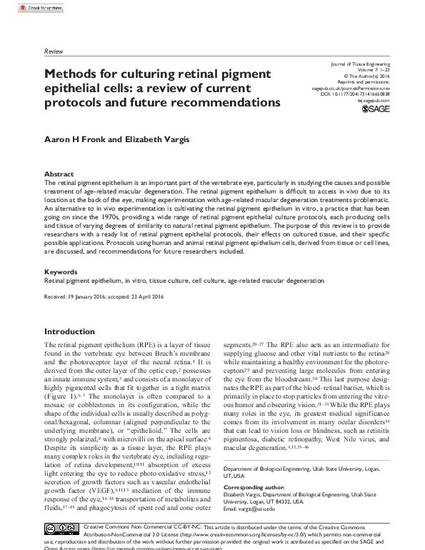
The retinal pigment epithelium is an important part of the vertebrate eye, particularly in studying the causes and possible treatment of age-related macular degeneration. The retinal pigment epithelium is difficult to access in vivo due to its location at the back of the eye, making experimentation with age-related macular degeneration treatments problematic. An alternative to in vivo experimentation is cultivating the retinal pigment epithelium in vitro, a practice that has been going on since the 1970s, providing a wide range of retinal pigment epithelial culture protocols, each producing cells and tissue of varying degrees of similarity to natural retinal pigment epithelium. The purpose of this review is to provide researchers with a ready list of retinal pigment epithelial protocols, their effects on cultured tissue, and their specific possible applications. Protocols using human and animal retinal pigment epithelium cells, derived from tissue or cell lines, are discussed, and recommendations for future researchers included.
